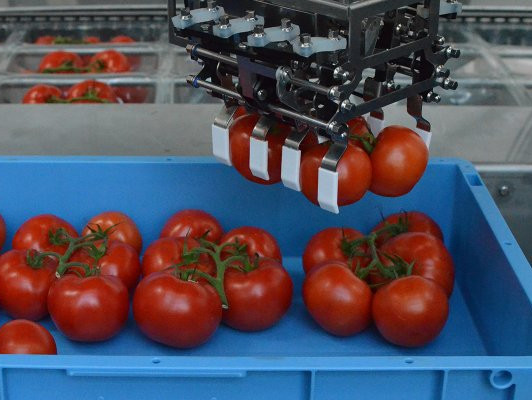
Picking and packaging a bunch of grapes with a robot already requires a lot of technology. But it can get even more complicated: automatically preparing a ready-to-eat salad. Researchers from Wageningen University & Research Agro Food Robotics will work together with partners from the business world over the next five years to develop a machine that can automatically collect and package meal salads. "The technology is now mature for it."
By using cameras, advanced computer programs, and robot grippers that are controlled by artificial intelligence, robots can now recognize and collect delicate products such as lettuce, raw vegetables, pasta, potatoes, fruit, nuts, egg, cheese, meat, and fish without the need for human intervention.
Artificial intelligence The use of artificial intelligence helps robots recognize and grip products in the harvest crate without first needing a person to place them on the conveyor belt. The ultimate robot must be flexible enough to switch between different types of products and packaging and must also be able to sort products of different quality classes.
"The ingredients for a soup package can be automatically packaged together soon."
The new technology is not only beneficial in the increasingly tight labor market, but also interesting for companies due to the rise of artificial intelligence. The ingredients for soup packages, for example, can be automatically packaged together in this way, and cleaning of the machines can be made "smarter" through sensors that continuously measure machine pollution and clean them from the inside when necessary.
The goal of the Agro Food Robotics program is to share the knowledge they gain from the development of this flexible, state-of-the-art production robot with the industry and thus further develop the application of robotics in the agricultural and food industry. With this innovative technology, we can improve the production of meal salads and bring more efficiency to the sector.
More information on this project can be found on the WUR site
Source: ©WUR